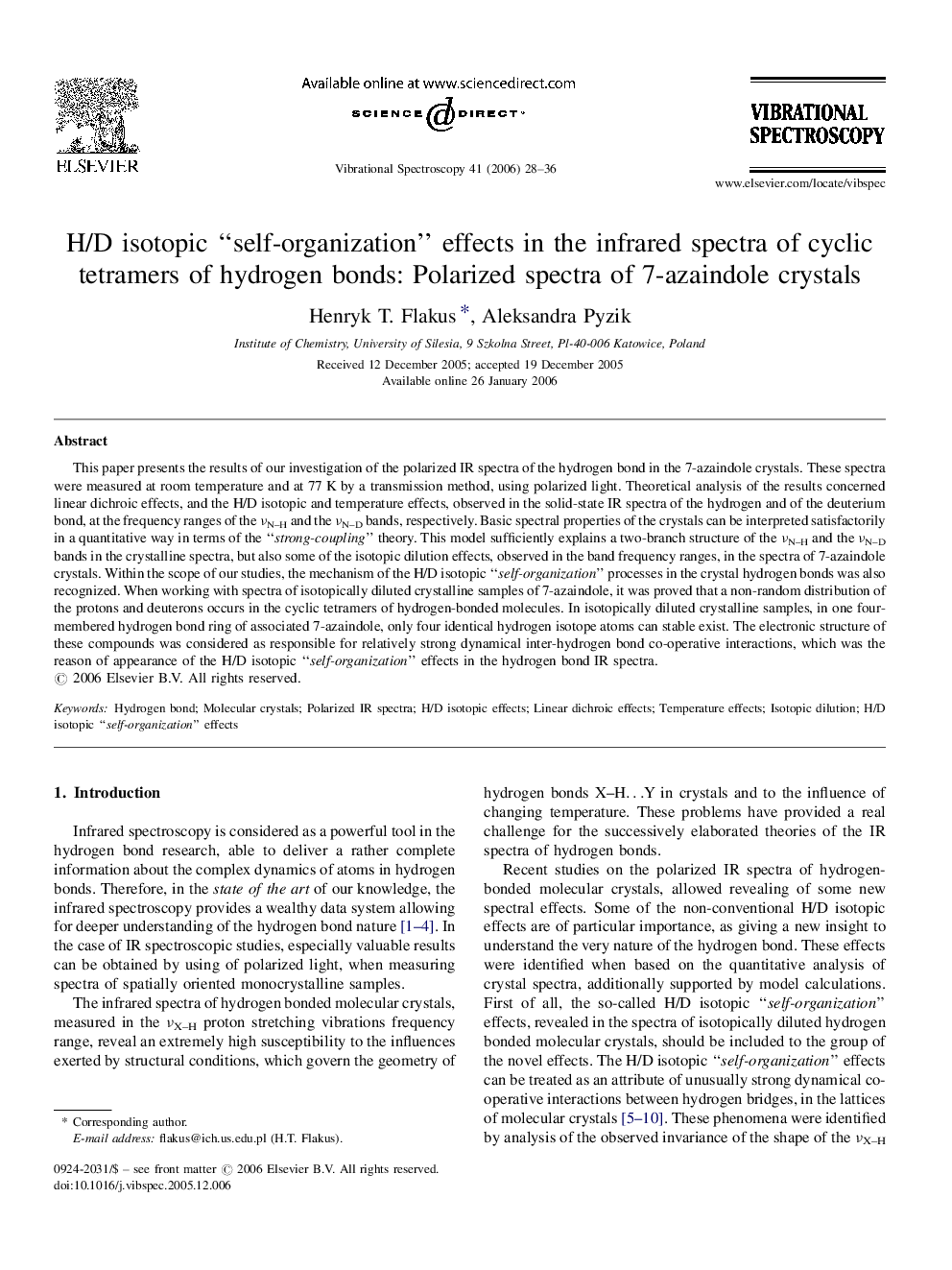| Article ID | Journal | Published Year | Pages | File Type |
|---|---|---|---|---|
| 1251126 | Vibrational Spectroscopy | 2006 | 9 Pages |
Abstract
This paper presents the results of our investigation of the polarized IR spectra of the hydrogen bond in the 7-azaindole crystals. These spectra were measured at room temperature and at 77 K by a transmission method, using polarized light. Theoretical analysis of the results concerned linear dichroic effects, and the H/D isotopic and temperature effects, observed in the solid-state IR spectra of the hydrogen and of the deuterium bond, at the frequency ranges of the νN-H and the νN-D bands, respectively. Basic spectral properties of the crystals can be interpreted satisfactorily in a quantitative way in terms of the “strong-coupling” theory. This model sufficiently explains a two-branch structure of the νN-H and the νN-D bands in the crystalline spectra, but also some of the isotopic dilution effects, observed in the band frequency ranges, in the spectra of 7-azaindole crystals. Within the scope of our studies, the mechanism of the H/D isotopic “self-organization” processes in the crystal hydrogen bonds was also recognized. When working with spectra of isotopically diluted crystalline samples of 7-azaindole, it was proved that a non-random distribution of the protons and deuterons occurs in the cyclic tetramers of hydrogen-bonded molecules. In isotopically diluted crystalline samples, in one four-membered hydrogen bond ring of associated 7-azaindole, only four identical hydrogen isotope atoms can stable exist. The electronic structure of these compounds was considered as responsible for relatively strong dynamical inter-hydrogen bond co-operative interactions, which was the reason of appearance of the H/D isotopic “self-organization” effects in the hydrogen bond IR spectra.
Keywords
Related Topics
Physical Sciences and Engineering
Chemistry
Analytical Chemistry
Authors
Henryk T. Flakus, Aleksandra Pyzik,
